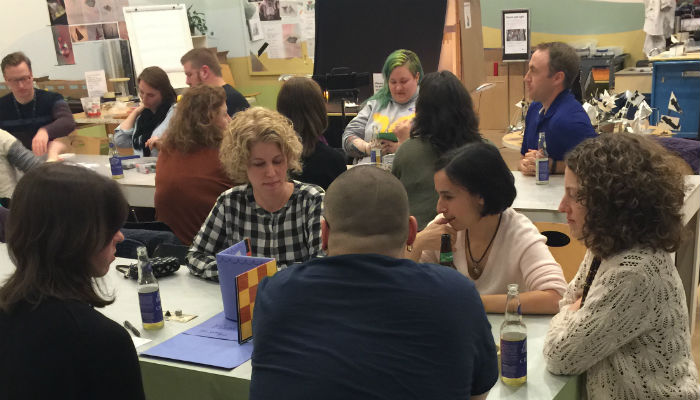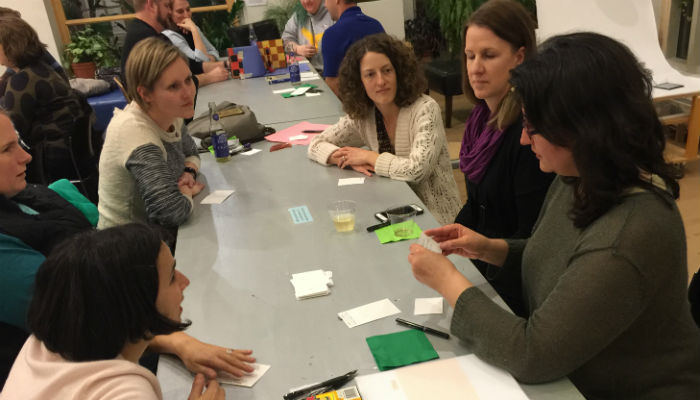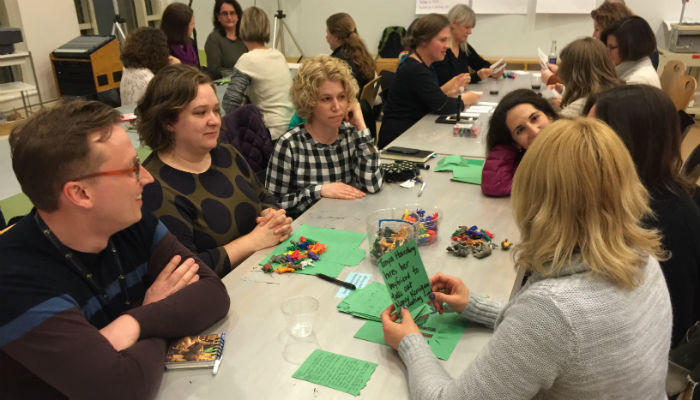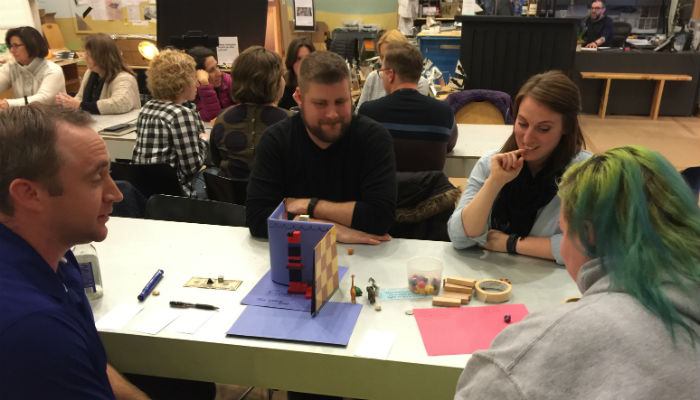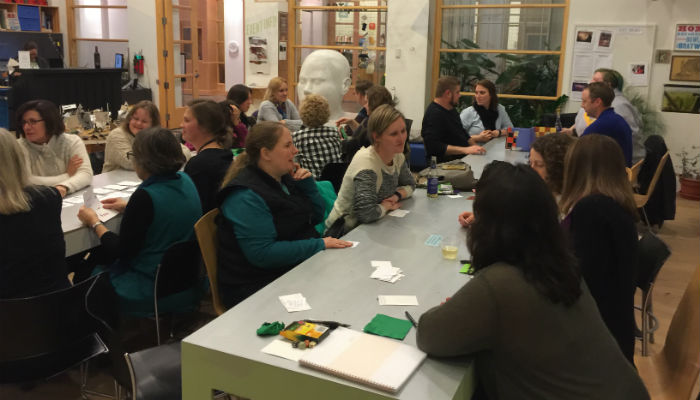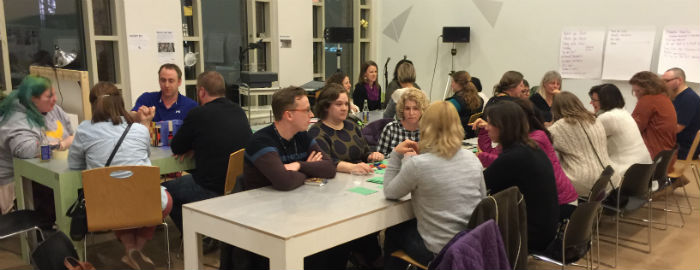
There is a lot of talk in education these days about “makerspaces.” It seems to be a new buzz word. The reality is that while it may be a new concept for some in the education community, it’s one of the foundations for The Étude Group. While the concepts of making and creating are not new for us, our role in sharing this concept at a greater level with the community is.
Recently, The Étude Group brought Dr. Erica Halverson from UW-Madison’s education department to Sheboygan. Dr. Halverson’s PhD is in Learning Sciences, and she shared her expertise on making and creating as educational tools. She led a parent engagement event, toured the schools, facilitated a professional development session for staff and invited community members, and participated in a community discussion with other organizations that are involved in various niches of the “maker movement” in Sheboygan.
Parent Engagement
Organizationally, we are always looking for parent engagement opportunities that coincide with the student experience. It can be a difficult to find activities that balance information, community-building, fun, education, and all those factors we want integrated into “parent engagement.” The ARTery (at the John Michael Kohler Art Center) provided the perfect location for the group of parents to hear about Dr. Halverson’s work and the learning that has come through play, making, and creating.
This parent engagement was not simply another presentation. It was an opportunity for the group to experience the “making.” Dr. Halverson chose to demonstrate through games. The group discussed what made a game, what was liked about our favorite games, what was disliked, etc. There were a few in the room who simply stated they didn’t like games. Others in the room were REAL gamers!
Our small groups were given a set (and small) amount of time to create a game. Some materials and resources were provided along with limited instructions. This was one of the things Dr. Halverson called “low-stakes stress.” As a participant, it was fascinating (and fun) to be a part of this process with friends and some people I had just met. Everyone gave input, discussed certain possibilities, and ultimately rushed to complete a game that could be played by others in the room.
The rest of the evening was spent leading others in your group’s game and trying the games of others. It was interesting to see group members take note of outcomes and twists in their games and discuss how it could be addressed. Rules were even changed on the spot to improve the game experience! This is another concept discussed by Dr. Halverson: failure. Failure can be one of the best tools for improvement; something often demonstrated in the greatest making experiences.
This night, the underlying questions were “What does it mean to learn and study through the arts? What do we learn?” As with nearly all makers experiences, art-based making experiences result in the value of the product and process (art for art’s sake in this example), but also in the skill building and tool skills (does the maker know how to use a blowtorch?), creativity, problem-solving and innovation, communication, and collaboration. As participants, we were able to better understand the value of learning through making and creating because we had done it, albeit in our low-stakes atmosphere.
Community Stakeholders Meeting
The next day, Dr. Halverson worked with The Étude Group Director, Ted Hamm, to convene a community group that reflected an interest in makerspaces and the maker movement. The purpose of this meeting was to take inventory of each group’s interest and resources and discuss how collaboration could be possible.
Important to this discussion was acknowledging that all creating is not the same. You may hear terms like tinkering, hacking, making, constructing, creating, and playing. Depending on many factors, each one has its place. For the community discussion, we considered three main parts of the maker movement in education:
1. Maker Spaces – the physical environments where the making happens
2. Making Activities
3. Makers – the identities in participation
The result was a healthy discussion about what we are doing, what is possible (including some of the best examples of the maker movement education in the United States), and how we can assist each other. Each organization had at least one of the components from above, but none had them all. The Étude Group has resources and leadership that can be used in partnership with so many community members; many of our community members have space and materials that are waiting for makers.
No final decisions were made, but the commitment to the discussion continues. It’s undecided whether Sheboygan will have a “Hive” (one of the successful networks of arts and maker organizations), a summer program led by The Étude Group and shared with our community partners, a traveling makerspace, or some other collaborative endeavor. However, future community meetings are being planned, and it is apparent that now is the time to continue this great conversation.
Reflection
Reflection and improvement is a cornerstone component of the work we do with our students and in our profession at The Étude Group. It’s also a cornerstone to “making.” Our staff is reflecting on this experience and how it could become a more conscious part of their classroom efforts. As an organization, we reflect and plan how we can provide leadership in the community discussion about and implementation of makerspaces and for the constant improvement of the experiences we provide our learners. Meanwhile, it’s always exciting to see more research documenting the benefits of the Etude Group’s type of instruction and creative making for learning!

